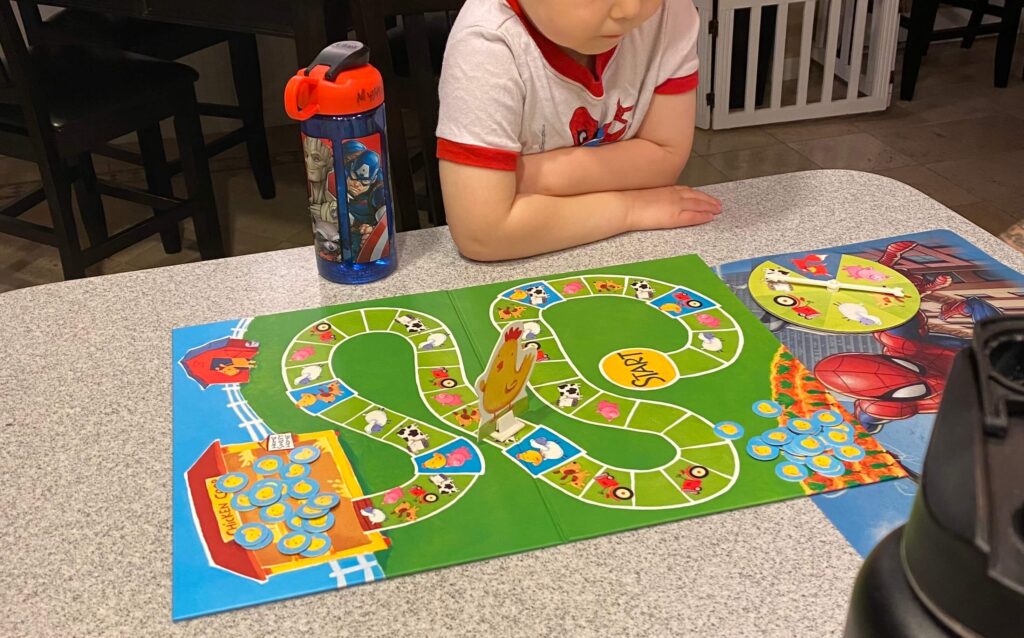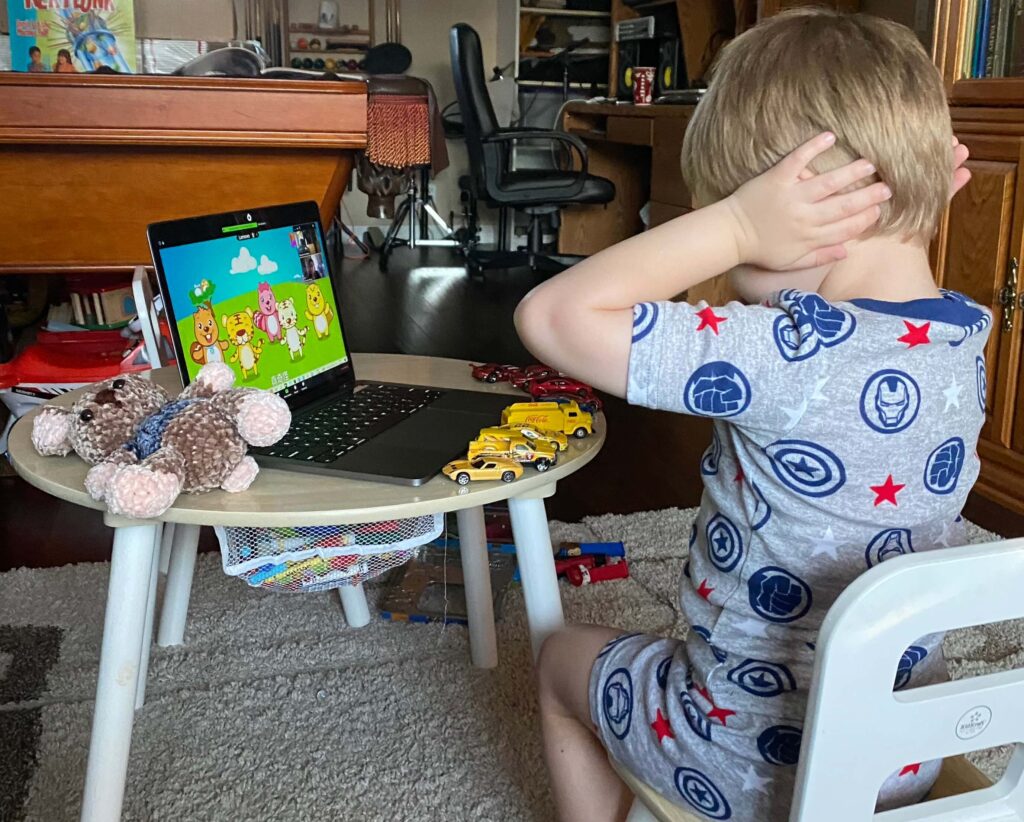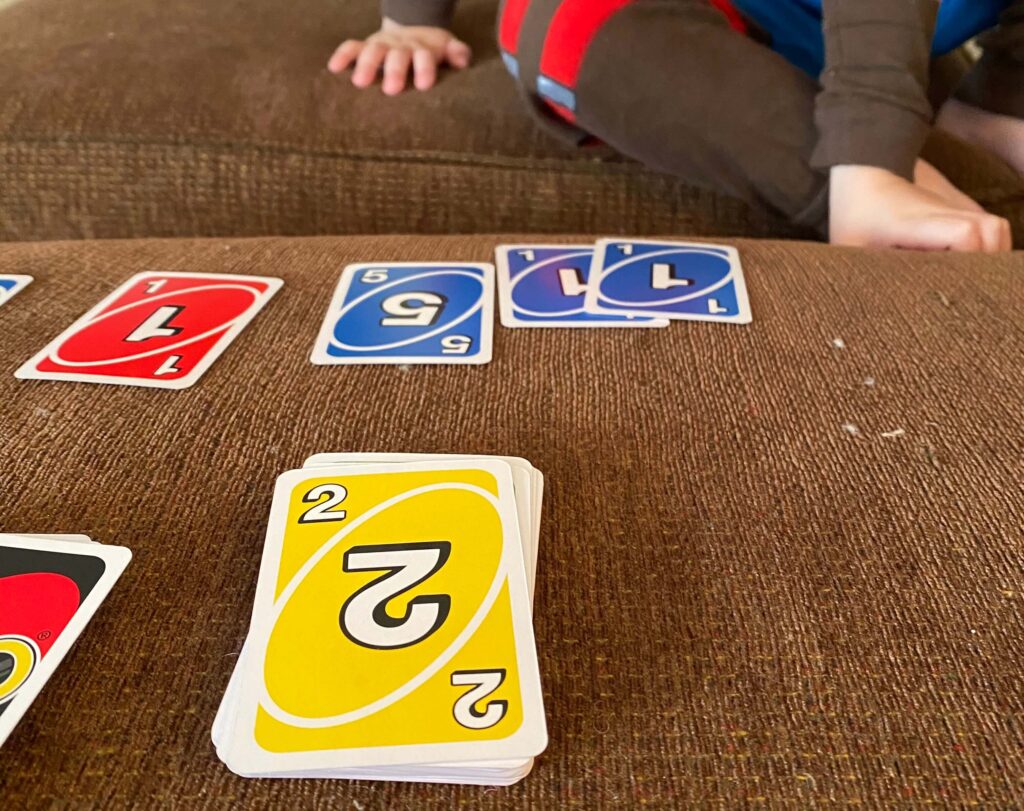How I’m Teaching My Kids Mandarin Chinese: 7 Techniques for Raising Your Children in Your Non-Native Language

My name is Shannon Kennedy and I'm the language lover,…
For the first two years of my son’s life, I spoke to him almost exclusively in Chinese.
We read, we played, we watched movies, and I gave instructions… all in Mandarin Chinese.
But as he got older and things started to change, I began to slip. English crept in until, fast forward to about two months ago, it was the only language he and I really spoke together.
Whenever I tried to bring Chinese back in, it seemed like he didn’t understand and that discouraged me from using it with him even further.
But then I got some encouragement and a bit of a push to bring Chinese back. And I realized I worried for nothing.

My Fears Raising My Children in My Non-Native Language
When I made the decision to speak to my son in Chinese, I had very little support. I had done all the research and knew it would work, but little comments from friends and family slowly pecked away at my confidence in what I was doing. I heard:
- You’ll confuse him!
- He won’t be able to talk to me because I won’t understand him.
- He’ll have speech delays.
- He’ll have trouble talking and will need to see a speech therapist.
The opinions went on and were endless.
Then he hit age two and he still wasn’t really speaking. He said a few words in his three languages—French, Mandarin, and English—but not many. He seemed to understand everything just fine. In fact, if I gave him instructions in English he’d ignore me. When I switched to Chinese and gave them again, he listened right away.
Me: Little Linguist, please sit down.
Little Linguist continues standing on the chair
Me: 请坐下!
LL sits down immediately
Nonetheless, I grew less certain I wasn’t doing all the things everyone warned me against. I let my fears everyone else was right in and English made its move and took over.
The Challenges Raising My Children in My Non-Native Language
I speak Chinese quite well. It’s a language I’m fairly comfortable in and I have a pretty big vocabulary. But kids are curious and my son constantly stumped me.
“What’s that?” he asked pointing to the fire sprinkler in the ceiling. The cement truck. The spinning top. The cupcake.
Suddenly, I was swamped with words I never realized I’d need to know.
At first, I’d tell him I didn’t know and I started to keep a running list to share with my tutor. I’d be prepared the next time.
But as I said, my son was curious. And soon, I was spending my entire hour-long lesson looking up words with my tutor. Words I still needed to study and learn after the lessons were over.
Then more comments came in…
What if you teach him your mistakes? I had an answer for that one. I knew that if I made sure he had enough exposure to native speakers, he’d one day correct me.
What if he learns your accent? Again, I knew he’d speak Chinese accent-less if he had enough exposure.
But because there were gaps in my knowledge, things I didn’t know I’d need to know to say, English again stepped through the door because it was tough to leave so many questions open for my son because I didn’t know how to answer him in Chinese.

How I Made Efforts to Compensate My Knowledge and Raise My Son as a Native Chinese Speaker Even Though I’m Not One
Knowing I needed support raising my son to speak Chinese, I did my best to get all my bases covered.
When he was a year old, we attended Mommy and Me Chinese immersion classes. I’d ask the teacher questions and make mental notes of how she spoke to the children in the class.
We read together in Chinese every night. I’d buy books and study them on my own in advance, learning the new vocabulary before I’d add them to our nightly rotation. I’d put in sticky notes with the pinyin for characters I didn’t know.
We’d watch movies in Chinese. I made sure to buy a copy of the Chinese versions of movies I knew he loved. Finding Dory. Kung Fu Panda. Cars. For his first Christmas, my brother bought him an all region dvd player and some movies.
We had flashcards I used to teach him new words. Little Pim was a big help.
But most importantly, I used it with him as much as I could until I didn’t…
How I’m Bringing Chinese Back and Raising My Kids to Speak It
About two years have passed since Chinese’s presence in our lives slowly started to diminish. My kids are now 4 and 6. This past summer, we moved into a new neighborhood and were surprised to find that a good number of the kids who live here and hang out with our kids are… bilingual.
There are kids who speak German, kids who speak Spanish, kids who speak Belarusian, and kids who speak Persian.
My kids would brag to their friends that I knew lots of languages, but I could tell they felt a little jealous and left out. And even share that they spoke Chinese, even though that wasn’t really the case any more.
Their dad, one day while listening to one of these conversations with their friends looked at me and said, “you really need to speak to the kids in Chinese.”
I tensed. The kids are older. How would I suddenly switch to another language with them? How would I keep from letting English take over again? I didn’t know where to restart.
But then I remembered, I don’t need to restart by doing all the things I was doing before. I just need to start with something. And besides, if I suddenly switched back to Chinese, the kids wouldn’t always understand me. It would be frustrating for them and for me and it’d quickly become a thing they’d reject.
So we decided to take things slow.
Here’s what I did, step-by-step to add Chinese back into our lives at home and raise my kids to speak my non-native language.

1 We read in Chinese every night
Each night the kids got to pick one book, but I got to pick one too. My pick would always be a Chinese book to make sure that at least one of the books we read together was in Chinese. And sometimes, the kids would pick a Chinese book as well.
I went back to basics and at first, picked the simplest books we owned. I’d read in Chinese, translate in English and ask them to repeat words after me.
When they’d point at something in the book and say “rabbit!” I’d nod and reply “对. 兔子.”
2 We changed the rules about tablet time
Before, we’d let the kids use their tablets on long car rides or as a reward for a particularly good day. But that didn’t mean they didn’t ask for them more than that. So when we started to reintroduce Chinese, we created a new rule. We told them they could have their tablets if they either 1) watched something in Chinese (usually Little Pim or Sesame Street in Chinese, but their tablets also have Chinese movies on them) or 2) played a Chinese game (currently: Gus on the Go).
3 We changed the rules about tv time
If the kids wanted to watch Power Rangers or a movie, they first had to watch 20 minutes of a movie in Chinese. We stocked up on movies they love—Trollz, Frozen, Wreck It Ralph, Minions—so they’d still have options they’d want to watch.
My son took to this immediately. Nearly every time we start a Chinese movie, he doesn’t ask to switch when the timer goes off. Instead, he watches it in its entirety and then moves on, not asking for whatever English language program he originally requested.
My daughter (the 6-year-old) is a little more entrenched in English, so she does the bare minimum.
4 Games and snacks became okay
Usually, we try to avoid too many snacks and it can be tough to arrange the time to sit down and play board games or card games with the kids regularly. But we made an agreement. If they asked for a snack in Chinese, they’d get one (as long as it wasn’t too close to mealtime). And if they played a game in Chinese, we’d sit down with them.
Candyland is great for learning colors. And UNO is amazing for both colors and numbers.
5 We keep a list of new Chinese words we review
Each week, I introduce them to a new set of words. I keep a journal so that I can keep track of what they should already know. I write them out using our alphabet fridge magnets, but I also add them to our chore board (along with our “rules”) just in case the magnets get played with.
6 I share what they work on in Chinese at home with their tutor
And in doing so, their tutor is able to reinforce what they learn with me. Their tutor is my tutor, so when I have my lessons, we spend part of our time discussing what I worked on with the kids so that when they have their lesson, she can work on it with them. She’s an amazing tutor and she knows just how to interact with each of my kids to keep them engaged.
With my daughter, it’s telling her she can’t be the real Loulou because she heard that the real Loulou learned three new colors this week. And she’d only believe it’s Loulou if she could prove she knew those things in Chinese.
With my son, it’s letting him show off his toys and asking questions about them, introducing the Chinese words for things as those conversations happen.
7 I try to incorporate Chinese into other parts of our day
In the car with the kids? I ask them to find me something that’s 紫色 (purple) or 红色 (red). We count together. I wrote the names of our cooking spices in Chinese, English, and French. I tell them I don’t understand them unless they say “please”, “thank you”, and “excuse me” in Chinese.
To Sum Up
As the kids get older, they’ll likely start to resist some of my requests. But I’m hoping to normalize as many of the Chinese activities as possible so they don’t feel like it’s this extra thing they have to do.
They have moments where they don’t want to do their Chinese lesson, or they don’t want to watch something in Chinese on their tablet to get tablet time. But thankfully, they still do it even if they’re a bit resigned about it.
I keep stocking up on Chinese language items for them when the opportunity arises. I recently purchased a few new movies and a set of fairy tales (stories they already know) in Chinese.
For now, I’m enjoying the hours of Chinese UNO and hearing their progress as they get more and more exposure to the language.
What about you? Are you raising your children to speak another language? Let me know what you’re doing to share a language with them in the comments below! And if you have any questions about our techniques, ask away!
My name is Shannon Kennedy and I'm the language lover, traveler, and foodie behind Eurolinguiste. I'm also the Head Coach of the Fluent in 3 Months Bootcamp, co-founder of Women in Language, and former Resident Polyglot at Drops.





